Ever glance at the little triangle on a water bottle and wonder what those numbers mean? You’re not alone. In a handful of seconds those “1‑7” digits can feel like a secret code—one that decides whether your snack container goes to a new bottle or the landfill. Below, I’m walking you through the whole thing, from why those numbers matter to how you can make smarter choices in the kitchen. Grab a coffee (in a recyclable cup, of course) and let’s crack the code together.
Why It Matters
Understanding plastic recycling numbers does more than satisfy curiosity. It helps you:
- Pick plastics that actually get recycled in your community.
- Avoid “harmful plastics” that can leach chemicals into food.
- Reduce waste by steering clear of items that end up in the trash.
- Feel confident that you’re doing something good for the planet.
According to the Association of Plastic Recyclers (APR), those little numbers are Resin Identification Codes (RIC). They tell recyclers what polymer a product is made of so the material can be sorted, washed, and turned into something new. The code itself isn’t a recycling guarantee—your city’s rules still apply—but it’s the first clue in the puzzle.
Decoding the Numbers
Below is the classic “plastic label guide” that you’ll see on most packaging. I’ve broken it into bite‑size chunks so you can instantly recognize whether a product is safe for food, easy to recycle, or best avoided.
| Number | Common Uses | Recyclability | Food‑Safety Rating |
|---|---|---|---|
| 1 – PET | Soda bottles, water bottles, salad‑dressing jars | Widely accepted curb‑side | ✔️ Safe for beverages & foods |
| 2 – HDPE | Milk jugs, detergent bottles, shampoo containers | Highly accepted, high‑value | ✔️ Safe for contact |
| 3 – PVC | Cling film, plumbing pipes, some shampoo bottles | Rarely accepted; often landfilled | ⚠️ Can release phthalates |
| 4 – LDPE | Squeeze bottles, grocery bags, bread bags | Limited curb‑side (often excluded) | ✔️ Generally safe but low recycling value |
| 5 – PP | Yogurt tubs, butter containers, bottle caps | Increasingly accepted | ✔️ Food‑safe, good alternative |
| 6 – PS | Styrofoam trays, coffee cups, packing peanuts | Almost never curb‑side; special drop‑off only | ⚠️ Can leach styrene; best avoided |
| 7 – OTHER | Biodegradable cups, multi‑layer packaging | Usually not recyclable locally | ⚠️ Unknown composition; treat as non‑food‑safe |
Number 1 – PET (Polyethylene Terephthalate)
PET is the poster child of recyclability. You’ll see it on crystal‑clear soda bottles, those handy salad‑dressing jars, and even on some frozen‑food trays. Because it’s lightweight and strong, recycling facilities love it—most municipal programs collect it, and the post‑consumer resin (rPET) gets turned into everything from fleece jackets to carpet fibers.
From a health standpoint, PET is “food‑grade” and does not leach harmful chemicals under normal temperatures. A quick tip: keep the caps (usually #5) separate from the bottle; they’re a different polymer and need different processing.
Number 2 – HDPE (High‑Density Polyethylene)
HDPE is the sturdy cousin you’ll find in milk jugs, detergent bottles, and many types of shampoo containers. It’s opaque, often colored, and has a high melting point, which makes it ideal for both recycling and food contact. Curb‑side programs usually give HDPE priority because the recycled material can become lumber, benches, or even new bottles.
Like PET, HDPE is considered safe for food. In fact, the EPA lists it as one of the “low‑risk” plastics, meaning you can store your leftovers without worrying about chemical migration.
Number 3 – PVC (Polyvinyl Chloride)
That cling film you use to wrap leftovers? That’s often PVC, and it’s the one plastic that raises the most eyebrows. PVC can contain phthalates—chemicals used to make the plastic flexible—that have been linked to hormone disruption. Because of those health concerns, many municipalities won’t accept PVC for curb‑side recycling.
If you’re looking to keep your kitchen safer, try swapping PVC wrap for silicone lids or beeswax wraps. You’ll still protect your food, and you’ll skip the “harmful plastics” pitfall.
Number 4 – LDPE (Low‑Density Polyethylene)
LDPE shows up in squeeze bottles, grocery bags, and those thin bread bags you toss after each loaf. While technically food‑safe, LDGE’s thin walls make it less valuable to recyclers. Many curb‑side programs either don’t accept it or ask you to keep it separate from other plastics.
One way to give LDPE a second life is to reuse grocery bags as trash liners or storage bins. That way you keep them out of the recycling stream where they can cause jams.
Number 5 – PP (Polypropylene)
PP has been the breakout star of the recycling world lately. You’ll see it in yogurt cups, butter tubs, and—interestingly—most bottle caps (including those on PET bottles). It’s sturdy, heat‑resistant, and increasingly accepted by local facilities.
PP is also a great “food‑container safety” champion. It doesn’t leach under typical kitchen temperatures, making it a smart pick for microwave‑safe containers (always check the label, though).
Number 6 – PS (Polystyrene)
When you think “Styrofoam,” you’re thinking #6. It’s the lightweight, cheap material used for coffee cups, take‑out containers, and packing peanuts. Unfortunately, it’s also one of the most problematic plastics for recycling—most curb‑side programs refuse it, and it can release styrene, a possible carcinogen, when heated.
If you love take‑out, consider bringing your own reusable container. For packing, look for “molded pulp” or recyclable paper alternatives instead of foam peanuts.
Number 7 – OTHER (Mixed, Bioplastics, etc.)
#7 is the “wild card.” It covers everything from polycarbonate lenses to biodegradable corn‑based cups. The biggest issue? It’s ambiguous. Recycling facilities can’t reliably separate it, so it usually ends up in landfills.
When you see a #7 product, ask yourself: “Do I really need this?” If yes, look for a clearer recycling code or a reusable alternative.
Shop Smarter
Now that you’ve got the “plastic label guide” memorized, let’s turn that knowledge into action at the grocery store.
- Scan the triangle. Spot the number and mentally file it into the table above.
- Prioritize #1 and #2. If you have a choice between a PET water bottle and a PVC wrap, go with the PET.
- Separate caps. Keep #5 caps away from #1 bottles—most recycling centers want them separate.
- Ask for bulk. Many stores now offer refill stations for laundry detergent (usually HDPE) and dry goods that bypass plastic altogether.
- Bring your own. A reusable stainless‑steel water bottle or a glass mason jar can replace dozens of PET bottles each year.
It’s amazing how a tiny number can transform your shopping list into a greener, safer plan. Next time you’re in the aisle, try a quick “code‑check” before you toss the item into your cart.
Recycle Right
Even when you pick the right plastic, you still need to feed it into the right system. Here’s a friendly reminder of the steps that keep the recycling loop humming:
- Rinse. A quick shake‑out removes food residue that can contaminate the batch.
- Sort. Keep PET bottles separate from HDPE jars and PP caps.
- Check local rules. Not every city accepts the same codes. A quick search on your municipality’s website can save a lot of frustration.
- Special drop‑offs. If you have #3, #6, or #7 items, look for a nearby retailer or recycling center that accepts them (many grocery chains have a “hard‑to‑recycle” bin).
According to a recent study by the U.S. Environmental Protection Agency, proper sorting can increase the quality of recycled resin by up to 30%, meaning fewer virgin plastics are needed. That’s the kind of win‑win we’re aiming for.
Balancing Benefits & Risks
Let’s pause for a moment and look at the bigger picture. Each plastic type offers a blend of advantages and drawbacks:
| Plastic | Benefit | Risk |
|---|---|---|
| PET (1) | Highly recyclable; strong barrier for foods | Caps are different polymer; must be separated |
| HDPE (2) | Durable, high resale value in recycling market | Colored HDPE can be harder to process |
| PVC (3) | Flexible, cheap for packaging | Contains phthalates; rarely accepted for recycling |
| LDPE (4) | Great for squeezable bottles & bags | Low market value; often excluded from curb‑side recycling |
| PP (5) | Heat‑resistant; increasingly recyclable | Still not accepted everywhere |
| PS (6) | Lightweight; cheap for single‑use items | Styrene leaching; almost never curb‑side recyclable |
| Other (7) | Enables specialty packaging | Unknown composition; rarely recyclable |
By weighing these pros and cons, you can decide which plastics are worth keeping around the kitchen and which are better left on the shelf—or swapped for a reusable alternative.
Putting It All Together
Here’s the quick‑fire recap you can print, pin on your fridge, or whisper to a friend the next time you’re at the store:
- #1 PET & #2 HDPE — your go‑to recycling heroes; safe for food.
- #5 PP — the rising star; safe and increasingly recyclable.
- #3 PVC, #6 PS, #7 Other — handle with caution; try to avoid in food contact.
- #4 LDPE — okay for food but often low‑value for recycling; reuse when you can.
- Always rinse and separate before tossing into the bin.
- Check local guidelines—what’s recyclable in one city may not be in another.
Feeling more confident? I know I do. The next time you spot that tiny triangle, you’ll have a clear mental checklist, and you’ll be a step ahead of the waste stream.
Take the Next Step
If you’ve made it this far, thank you for staying with me! I’d love to hear how you’re using this guide. Have you swapped a PVC wrap for a silicone lid? Found a local drop‑off for #6 polystyrene? Drop a comment below, share your story, or ask any lingering questions. Together, we can turn those little numbers into big wins for our health and the planet.

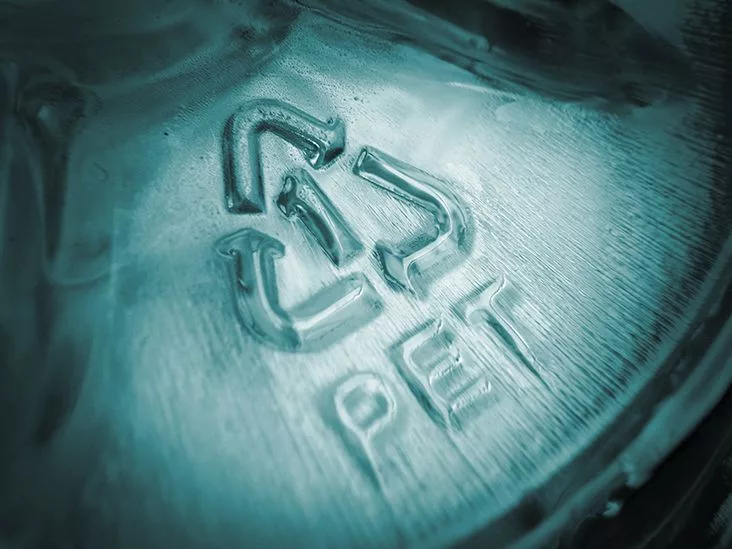





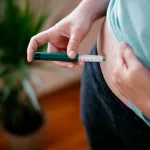

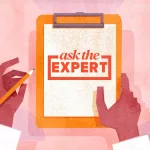
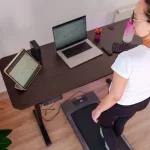

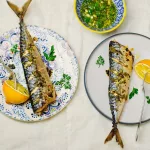


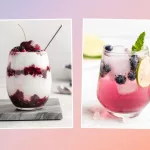

Leave a Reply
You must be logged in to post a comment.